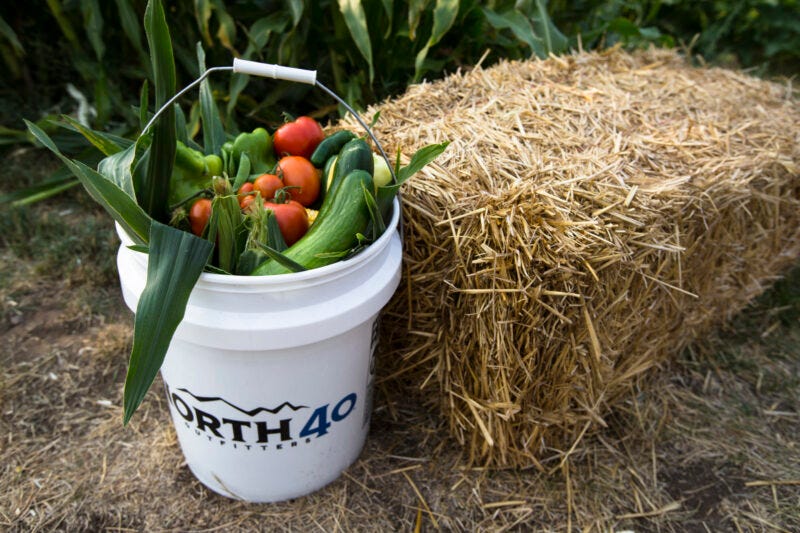How do I Plan a Garden?


Zucchini, pumpkins, peas, corn, and carrots! Have you ever wanted to grow your own vegetables in your backyard? Maybe a full backyard garden is too much, maybe container gardening is more up your alley? And, what are garden amendments anyway?
Growing a garden is really doable, and planning a garden is
where it all begins. Watch and learn as lawn and gardening expert, Amy Grisak,
explains the ins and outs of planning a garden from scratch. So, get ready to
roll up your sleeves and dig in, a little dirt never hurt anyone!
Video Transcription
What Would you Like to Grow
Hi, this is Amy Grisak for North 40 Outfitters and today I'm going to give you a few gardening tips. Before you ever put a plant in the soil or a seed in the soil, you should sit down and plan what you want to grow this year. It's too easy when you get out with that blank garden soil full of possibilities to over plant. So the first thing you need to do is decide what vegetables you like the most. If you're not a fan of okra if you go the grocery store, you might not want to plant it at home. Decide what your family likes and how many times a week that you eat that particular vegetable.
How to Design a Garden
Now, for the other types of plants, it's going to partly depend on what your garden set up is like and how much you use it. So how to plan and how to design the garden is also critical. The first thing you're going to want to consider is your sunlight. Pretty much all vegetables need a fair amount of sunlight, at least eight to 10 hours of direct sunlight during the summer to grow the best results. When you plan out your garden, you don't want to shade your plants, so you want to put the shortest plants like the carrots, and lettuce, and beets and things like that towards that south side or wherever the most sun is coming in and then gradually step it back to those tall indeterminate tomatoes that can grow six feet tall as well as the corn. So you want to make sure the big ones are not shading the small ones.
The type of rows that you grow are also depending on what your gardening style is. For the most efficient type of gardening you plant in either double rows or in blocks of plants. Now if you plant in a block, you always want to make sure that you can reach in the middle because you never want to have to step in the middle or really get your hands down in the middle of the bed. You want to be able to reach in the middle where you can harvest and you can weed if necessary.
Planning your Plant Spacing
Now if you're going to plant in traditional rows and you have a rototiller, you need to make sure you have plenty of space in between those rows, depending on the size of your rototiller. A lot of times it's 32 inches so it's a pretty considerable space because you need to be able to take that machine down and turn it around and bring it back. If you don't have a rototiller, you want to keep a nice tight row. You want to keep just something that you're comfortable in walking and working and kneeling on. The nice thing is though is you can put down say cardboard or 8, 10 sheets of newspaper and even cover the rows with straw, the aisles with straw to be able to kneel on it nicely. The straw is very nice on your knees, plus it keeps the weeds down.
Why add Flowers to your Vegetable Garden?
Another thing that you want to think about when you're planning your garden, even for the vegetable garden, is to start incorporating flowers into the garden. It's really a good idea to add some interest, not only is it nice for the butterflies in that, but it also brings the bees in. So one of the biggest problems that a lot of gardeners have, especially if they're in town, is to have enough pollinators in their garden to be able to pollinate the tomatoes and the squash and everything else that we'd like so well. So if you plant flowers among your vegetables, not only does it look fantastic, but it brings the bees to the table as well.
So take some time now, plan out your garden on a piece of paper. At least jot down what you want, how much you want and so when you're really excited and you get out in that blank soil that we all love, you'll keep everything under wraps. If you have any more questionings about gardening, be sure to stop by any of the North 40 Outfitters locations or visit North40.com.
